Nelson Pass’ name is on the front door of Pass Labs and for good reason. He is very possibly the most important amplifier designer to walk the Earth. Here’s something that not every audiophile knows but is true, though: Nelson doesn’t design his namesake preamps. His colleague, Wayne Colburn, is the man behind all things preamplification at Pass Labs. And these Pass Labs preamps are just as lust-worthy as Nelson’s wonderful sounding, often hot-running, Class-A power amps. Greg Handy bought his review sample of the $6,100 Pass Labs XP-12, which we reviewed a few months back. My task is to evaluate the next preamp up in the product lineup which is the nearly $10,000, two-chassis, audiophile-tastic Pass Labs XP-22. I have a very cool day job.
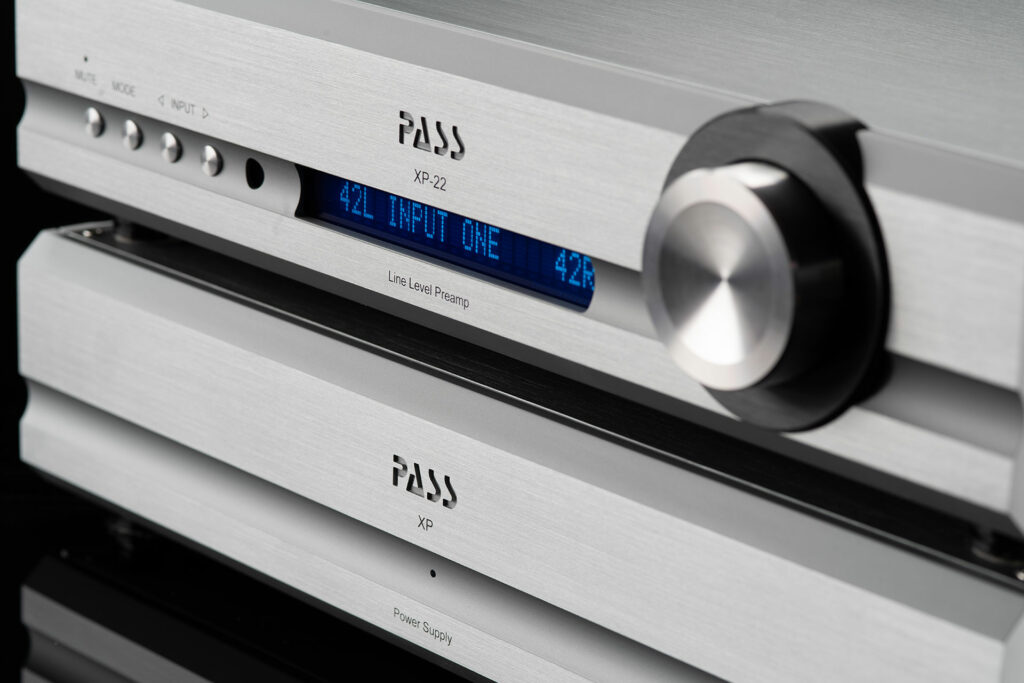
There is a lot of trickle-down technology that makes it into this pure stereo preamp. By a “pure stereo preamp,” I mean that this audiophile component manages input selection and controls the volume. It doesn’t have HDMI inputs, a fancy 32-bit internal DAC, bleeding-edge room correction, slick bass management, Bluetooth 5-point-whatever, or any of the features that also are found on many of today’s more modern-style preamps. If you want to play records via your audiophile turntable, cool, but you’ll need one of Pass Labs’ legendary phono stages. This preamp is designed to be simple yet excellent. Every possible part, every possible detail is considered with the hopes of delivering the best possible sound that ten grand can buy.
The design is a bit minimalist under the hood but that isn’t a bad thing in an audiophile preamp at all. The sound is anything but minimal, as each little incremental change yields the listener’s ability to get that much closer to the music on the recording. Pass Labs products aren’t designed to have a house sound; they are designed to have no sound at all. That’s my kind of preamp on a philosophical level. Let’s see how it performs.
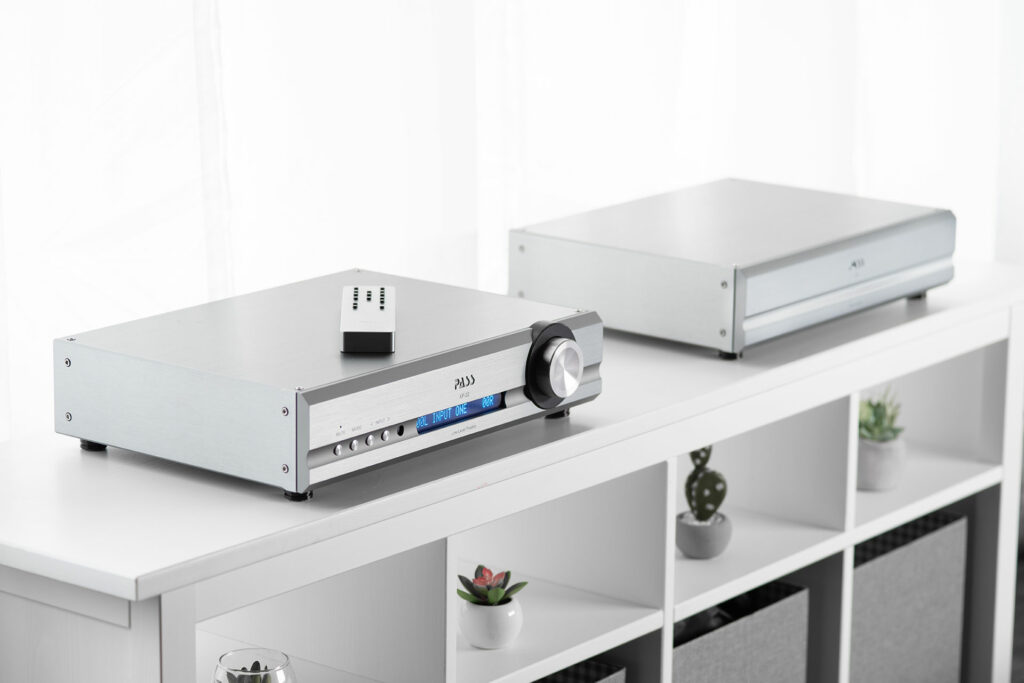
What Makes the Pass Labs XP-22 Stereo Preamp Special?
- The build quality is second to none. The two-chassis design is made in California by true electronics craftsmen and this fact is obvious from the second you crack open the boxes. Every little detail is considered, from the remote to the volume control to the input buttons. This is a very luxurious stereo preamp by any measure.
- The two-chassis design is to accommodate a world-class, dedicated power supply. The power supply sits on the bottom and the control unit sits on top (I guess you could flip there around but I never tried that). The two units are connected by a super-high-quality, oxygen-free copper cable using a multi-pronged, locking connector. When you feel the cable click in place, you have a first glance into the level of detail that the designers at Pass Labs go to in order to get you the Nth degree of performance.
- The power supply uses a double-shielded toroidal transformer, which is only part of the reason why the Pass Labs XP-22 measures with so little noise.
- There are two balanced (XLR) and three unbalanced (RCA) inputs as well as balanced and unbalanced outputs. There is also a tape loop.
- There is a trigger to control your amp, which is specifically important to me as my Pass Labs XA25 amp runs hot because of its installation in my closed-door, double Middle Atlantic equipment rack, so I don’t leave the Pass Labs amp on when I am not listening. This trigger makes turning on the amp from the remote even simpler. The XP-22 runs cool to the touch in case you were wondering.
- The volume control is the same one used in the much more expensive Pass Labs XP-30. It uses Toshiba transistors and matches perfectly with my Pass Labs XA25 amp, which is admittedly a little low gain for an amp but that’s just not a problem when paired with an XP-22 preamp.
Why Should You Care About the Pass Labs XP-22 Stereo Preamp?
The audiophile who understands that the collection of every possible advantage, be it small or large, is the key to getting closer and closer to his or her music, is the person who will be compelled by a Pass Labs XP-22. If you are looking for a sonic flavor, look elsewhere. Same for those looking for a modern all-in-one DAC/preamp that has all the bells and whistles included in one component. The XP-22 is a very simple audiophile preamp designed to take the design approach that you see in high-end auto racing and apply it to audio. No detail is overlooked en route to hearing what is on the source component. The audiophile value proposition is that simple, and for many, it is very compelling.
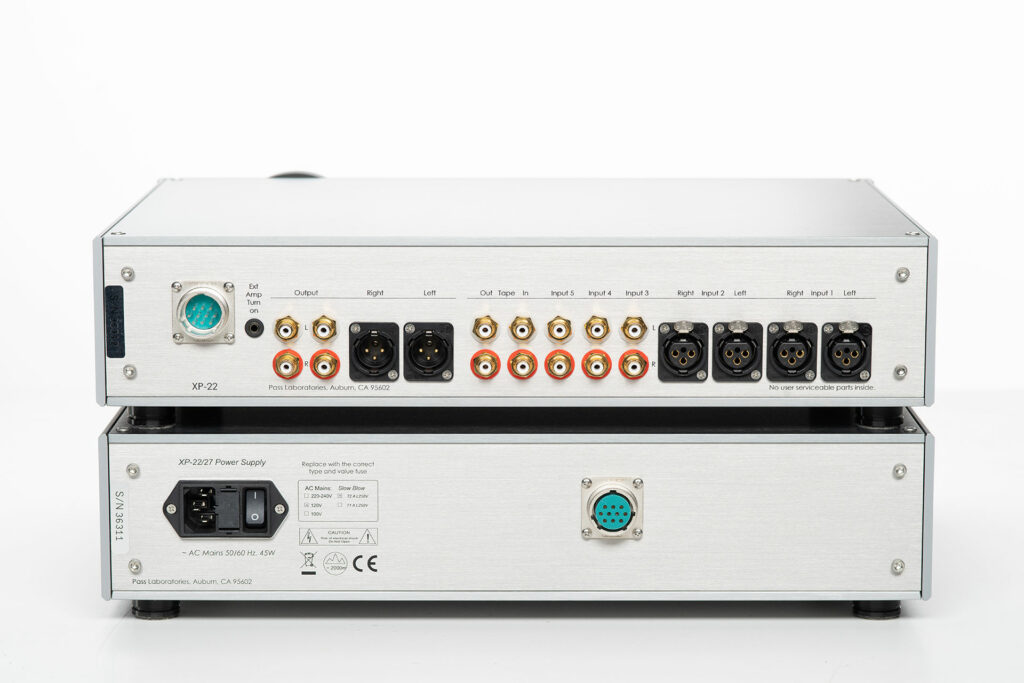
Some Things You Might Not Like About the Pass Labs XP-22 Preamp
- The remote is a typical audiophile aluminum brick. It works fine, but more often than not, I would control my source using an iPad, thus have control of the variable outputs right at my seat.
- There is no internal phono stage for vinyl lovers, which is pretty standard in many of today’s audiophile preamps. Pass Labs makes some of the best phono preamps in the world and by all means, one can plug into one of your five audio inputs on a Pass Labs XP-22 preamp.
- As I mentioned earlier, this is a simple preamp with simple features. My reference preamp is the Anthem STR, which cost about $6,000 less at retail. It has a fancy internal DAC, Anthem Room Correction, a phono section, and much more. The Pass Labs appeals to the audiophile who gets that less is more when it comes to sound.
Listening to the Pass Labs XP-22 Stereo Preamp…
It might be necessary to ask for a bit of understanding for this section of the review, in that I have been so compelled to listen to my most tried-and-tested, most favorite albums of all time that I might get caught up in a bit of musical cliché. For that, I apologize in advance, but I tend to think that a new product that makes you want to go back and listen to your favorite music is one that is worthy of significant praise.
On “Women In Love” from Van Halen II streaming from Amazon Music, within seconds you hear the glistening sound of the analog stomp boxes that Eddie Van Halen was using back in the late 1970s. When listening to the Pass Labs XP-22, you can just hear more detail from the master recording. You can hear more of the sound of the effects on the guitar in ways that I’ve not heard in hundreds and hundreds of plays of this song. Later in the track, I noted the layered backup vocals had even more resolution and depth to them than I remembered. This isn’t as much of an audiophile ah-ha moment as it is a more subtle realization that you can hear more of the music in the way that the artist, producer, and engineers wanted for you to experience.
Sticking with an audiophile all-time classic album from around the same era, I cued up “The Chain” from Fleetwood Mac’s Rumours album. Lindsey Buckingham’s acoustic guitar can sound flat on every other system I’ve listened to this classic rock staple on, but with the Pass Labs XP-22, I heard new vibrancy and resonance from his strings that I just never experienced before. Again, with the Pass Labs XP-22, you are never blown away by the sound as much as you have these musical awakenings as to how your most familiar recordings actually sound. It is like having a clearer window to look through on your musical world.
I might as well apply for a job as a DJ at an FM radio classic rock station with this next musical example, but “Hey You” from Pink Floyd’s The Wall was of specific note. The opening, with Roger Waters on fretless bass, sounded so much more three-dimensional and palpable than through other comparable stereo preamps. Waters’ voice (with Gilmore on the track as well, but Waters sings the lead) had a more gritty, raspy, and believable vocal sound. The smoldering burn on David Gilmore’s Strat was right on. This is about as familiar territory as it comes for me, musically, but it was these all-time classics that I wanted to hear all over again with the Pass Labs XP-22 preamp in my system.
Will the Pass Labs XP-22 Preamp Hold Its Value?
Is this a trick question? Of course, a Pass Labs XP-22 preamp will hold its value. While the company might not have as many U.S. dealers as, say, McIntosh, which is sold through Magnolia stores, the demand for Pass Labs gear used is strong. When I closed my West Los Angeles office long before COVID, I sold my Pass Labs XA 30.5 amp within 10 to 15 minutes on posting it on Audiogon. I likely sold the amp at too low of a price, as I didn’t foresee that much demand. I would expect a little taste of that past success when moving on from a Pass Labs XP-22.
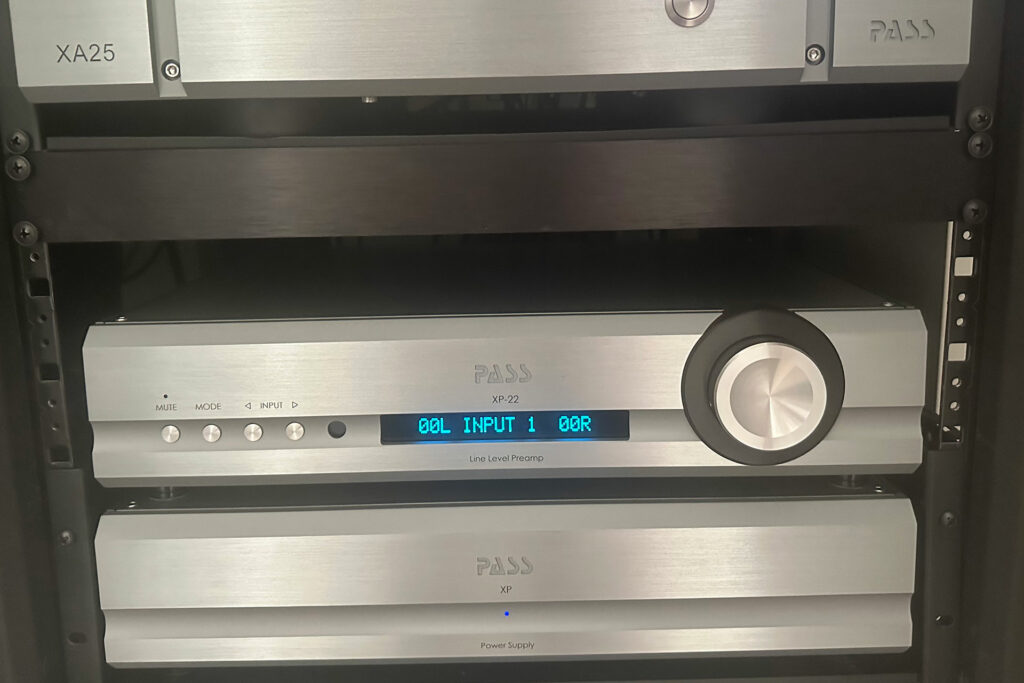
What Is the Competition for the Pass Labs XP-22 Stereo Preamp?
I recently had Classé’s Delta PRE (read my review here) at the same $9,999 price in my system for review. The build quality of the Classé is more physically polished, but both components are worthy of your audiophile affection. The Classé preamp is also an advanced DAC, has tone controls, and even has HDMI inputs. It is a far more modern, consolidated unit. The Pass Labs XP-22 is about doing one task and doing it really well. The Classé Delta PRE is more of an audiophile Swiss Army Knife, in that it is capable of so much. The Delta PRE is wonderfully detailed, but the XP-22 goes one level deeper in resolving fine musical detail.
Another blue-chip player in the market is the Audio Research LS28SE line stage, which comes in at the same $10,000. This one is a tube preamp, so it has an ever-so-slight warm sound that we expect from vacuum tubes. While the ARC preamp comes with more inputs and has a comparably gorgeous looking build quality, the Pass Labs is a two-chassis unit and is unlikely to need as much maintenance as a tube product will over time. The Pass Labs is a little bit more plug-and-play, but both preamps take a simplistic, old-school view of what a preamp should do and how it should work.
Pass Labs’ XP-12 at $6,100 (read Greg Handy’s review here) is about as close of a competitor as you could hope to find for the XP-22. This is a single-chassis unit that has a slightly lesser volume control as compared with the Pass Labs XP-22. Having a dedicated, external power supply is a pain in the ass and takes up a lot of space, but there might not be one factor that makes one high-end preamp better than another more than its power supply, and for about $4,000 more, you get one hell of a power supply in the XP-22. The next incremental level of sonic performance will cost you, but the Pass Labs XP-22 is likely not the first preamp that an audiophile will invest in as much he or she will follow the path of their journey to exotic wonderful places like an XP-22.
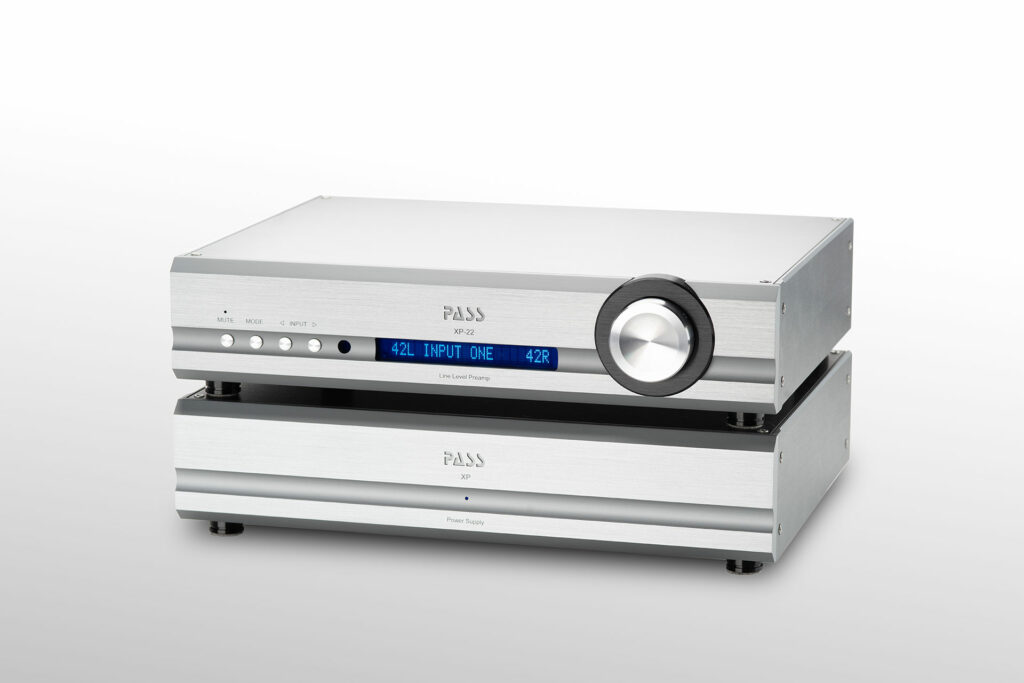
Final Thoughts on the Pass Labs XP-22 Stereo Preamp
You can’t do your audio portfolio wrong by adding some Pass Labs to the mix. The XP-22 stereo preamp is a simple, elegant, and ultra-high-performance audiophile component that really understands where the fun is in this hobby. If you ask people outside of the audio world if $10,000 is a lot of money to spend on part of a stereo system, one might bitch-slap you like you were an audiophile Chris Rock. Those of us who are seeking the best possible sound with the meaningful money we are willing to invest in our systems will absolutely love the Pass Labs XP-22.
Some of the luxe audiophile products on the market today from exotic European countries packing retail prices that make a new Aston Martin look downright affordable might have something to worry about with the Pass Labs XP-22, in that the performance is so rock-solid on this preamp that it is hard to imagine what another five-figure increment will get you. I know it is something, and, hell, even Pass Labs have even higher-end stereo preamps, but it is just worthy of a pause to imagine how they could sound that much better than an XP-22.




Nice preamp and very good review. Tired of outdated blue displays but I could live with it.
I wish your reviews had sonic comparisons with components with similar features and or price.
Nik,
I compared the Pass Labs to its smaller brother (an important step for anybody considering a Pass Labs preamp), then a Classe at the same price and an ARC at the same price.
What more could you want here?
Nice review, but I could use a little breakdown on what you heard. Soundstage presentation as delivered in your room with your gear compared to others? High frequency detail? Listenability? Bass extension, dynamics? Noise floor vanishingly small?
I want one so badly!!!
What, a detailed review or the actual preamp. Being greedy, I want both! 🤓